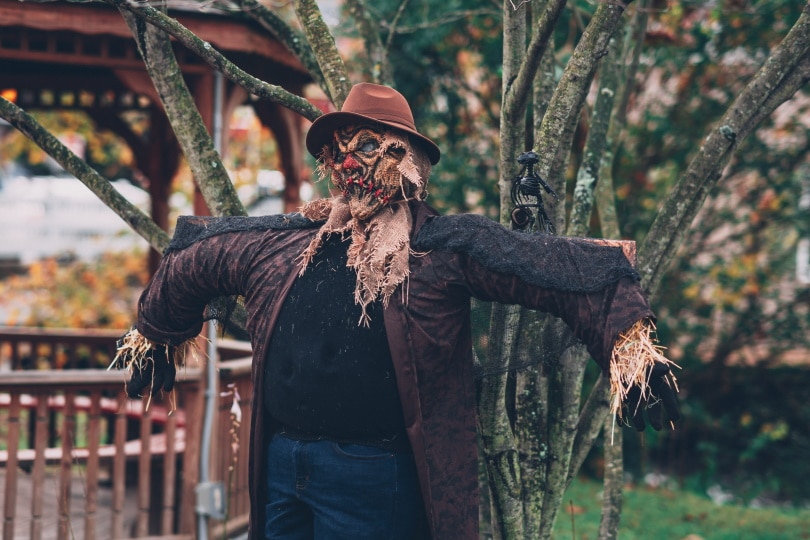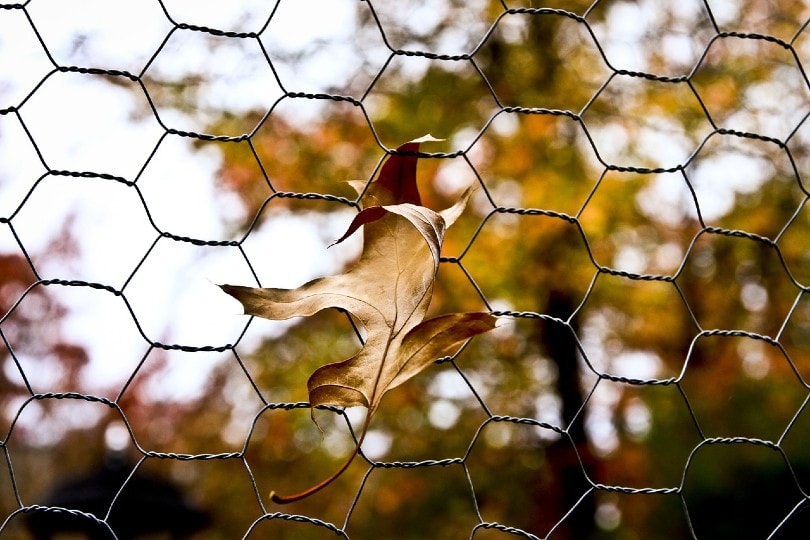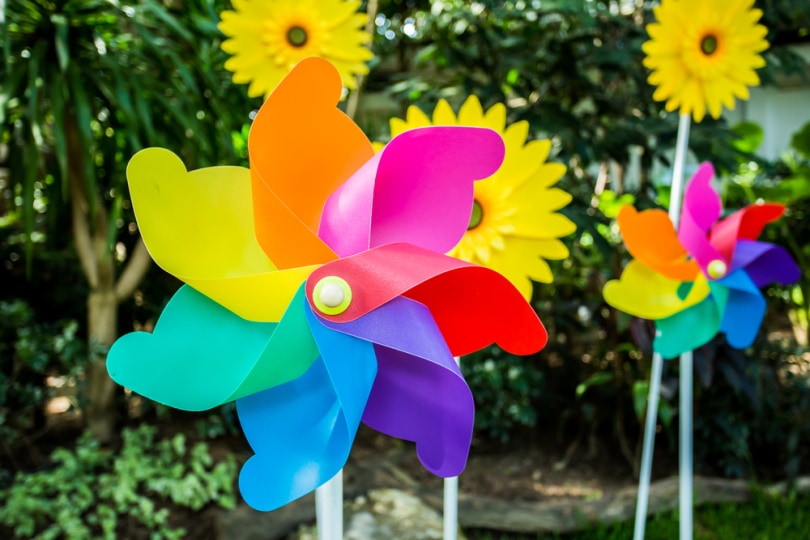How to Keep Birds Out of Your Garden: 12 Humane Ways
-
Melissa Gunter
- Last updated:

Birds are beautiful creatures to sit and enjoy when they visit your yard. Kicking back on the patio to watch them bathe in the bird bath or frolicking in the trees is soothing. Unfortunately, those same beautiful birds can become a nuisance when it comes to your gardens. For those of us that love wildlife and wouldn’t dare do anything to harm them, there are ways to save your gardens humanely. 
The 12 Humane Ways of Keeping Birds Out of Your Garden
1. The Trick with Scarecrows

You may hear gardeners claiming scarecrows do nothing when it comes to detouring birds from their gardens. While that may be their experience, you can’t blame it on the scarecrow. The trick with scarecrows is understanding that birds are not dumb. If they return to your garden often, they’ll notice the scarecrow. What they’ll notice even more is the fact that it stays in the same spot. To utilize a scarecrow to keep birds out of your vegetables and flowers, it should be moved routinely. This will trick the birds into thinking your scarecrow is a potential threat. It also helps to change their clothes weekly.
2. Garden Netting
If you’re in the market to protect your garden, garden netting may be your answer. The key, however, is using the right netting. When using hoops and netting to protect your garden, many people turn to animal netting. This can actually be dangerous. Animal netting allows small animals, and in some cases, larger ones to get caught and worse, injured around your garden. Instead, it is best to use butterfly netting. This type of netting is small enough to keep birds and other animals out while allowing insects like honey bees in. This option is safer for the creatures in your area and can save your veggies and flowers from birds who may visit.
3. Garden Fleece
Garden fleece is most gardener’s go-to option when a frost is coming and they have crops to protect. This fine material can be draped over crops to keep more than just the weather at bay. Garden fleece can be utilized year-round and will keep birds and other intruders away from your crops when they are becoming a hassle.
4. Chicken Wire

While chicken wire isn’t an option for larger plants, it does come in handy when you’re starting crops of plants around the home. Freshly grown seeds are loved by birds. When you plant, placing a bit of chicken wire over the ground for a time will keep birds and even chickens away from your fresh seeds until they are ready to grow and thrive on their own. At this point, you can raise the wire and use stakes to provide a higher level of protection.
5. Plastic Predators and Toys
When a bird comes swooping down to your garden, catching sight of a predator can scare them enough to make them fly away and leave your garden alone. A few of the most popular plastic predators out there are owls and falcons. You can also grab toy snakes. By placing these strategically around your garden, birds will catch sight of them and take off before having time to munch on your crops. You can even find decoys that make noise to add a bit more assistance.
6. Terror Eyes Balloon
The terror eyes balloon is one of the most commonly used items for deterring birds from your garden. If you take a look at these large, yellow balls with eyes you’ll see why the birds aren’t fans of them. Like any balloon, you inflate them and then place them in the garden. Here, the wind will make them move and sway. This movement scares visiting birds quickly and can save your garden when needed.
7. Garden Spinners

Garden spinners come in a variety of shapes and sizes. When passing by a cute vegetable or flower garden down the street you may think they are only there for decoration. The truth of the matter is, garden spinners are great ways of keeping birds at bay. If you can’t find one you like at the local store, make your own. Anything with streamers, color, or even a touch of plastic billowing as the breeze blows will help protect your plants.
8. Mirrors and CDs
You may not have issues with light reflection, but birds do. If you’re determined to keep the birds out of your garden, simply decorate with mirrors, glass, or even hanging CDs. As the light hits these objects, or the wind blows them, a bird will quickly flee.
9. Wind Chimes
Birds are afraid of quite a few things. Sound and movement are at the top of the list. That’s why wind chimes are the perfect addition to your garden. Not only are they cute and nice to listen to, but they can also protect your vegetation from outside visitors.
10. Protective Pets

We’ve all seen how birds will flee when our cats or dogs burst out of the house. If you have a pet that enjoys the outdoors, you have the best weapon against unwanted birds who feast in your garden. Keep in mind, however, that your pets will need supervision. The last thing you want is your dog pouncing through your garden or your cat using your fresh veggies as a litter box.
11. Create a Stick Jungle
This method is normally used to protect seedlings and young plants. Gather a few sticks from the backyard and create a makeshift jungle around your plants. Seeing the sticks and twigs, birds will avoid trying to steal your new seeds or young plants.
12. Relocation Is the Last Resort
Unfortunately, some birds can be persistent. If you’ve tried all the above measures and nothing is working, relocation may be your last resort. While it isn’t great to move birds away from their homes, it can be done without causing them any harm. Simply use safe, live traps and take the birds to areas where they can flourish without hurting anyone’s garden. You can even ask local wildlife experts about areas they’d recommend.

Conclusion
If your dream garden is being attacked by unruly birds, these 12 methods can help you put an end to your problem and make your garden enjoyable again. If you have lots of birds visiting your home, try implementing more than one of these methods. By giving things a bit of time, you should see the number of birds visiting your garden lessening while your plants blossom.
Featured Image Credit: Bonnie Taylor Barry, Shutterstockc
Contents
